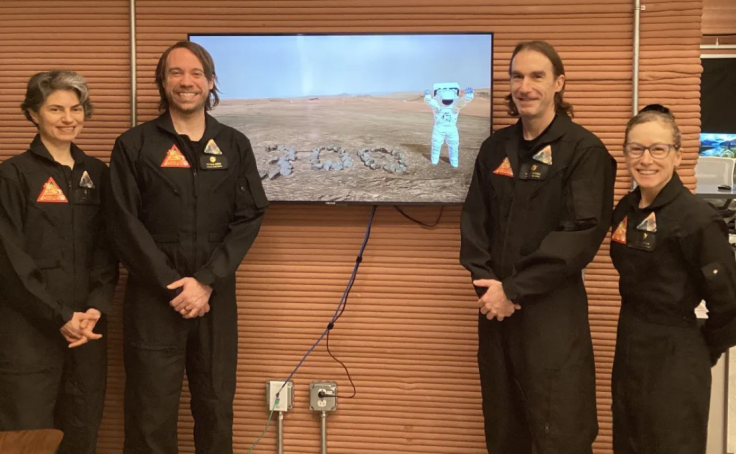NASA has been aiming to send people to Mars for a while, but it won't just be for exploration or collection of samples. The space agency intends to send people to the Red Planet for a long stay, and the year-long simulation to see its feasibility has ended today.

NASA's CHAPEA Mission 1 Ended Today
CHAPEA or Crew Health and Performance Exploration Analog is a simulation created to determine whether humans would survive the conditions found on Mars, and the four volunteers for the test just came out of the 378-day simulation.
At 5 p.m. ET, Kelly Haston, Anca Selariu, Ross Brockwell, and Nathan Jones left their 3D-printed habitat in Houston, which was live-streamed on NASA TV. This means that NASA's first CHAPEA is a success.
The habitat the crew stayed in was a 1700-square-foot space at the Johnson Space Center, which they entered on June 25th last year, as reported by Engadget, and the crew has conducted several activities one would do on Mars.
That includes simulated Marswalks, growing vegetables, and performing tasks allowing their habitat to support life as they work in it. The crew would harvest salad crops occasionally as an alternative to shelf-stable food.
NASA is not just aiming for Mars. There have also been plans to lead a long-term science and exploration for the Moon through the Artemis missions. The space agency will land the first woman, first person of color, and first international partner astronaut on the Moon.
Now that the Mission 1 crew for CHAPEA is done, NASA will prepare for the next two. There have been applications accepted for the next mission, although it's still unknown when the simulation will start for the next crew.
CHAPEA Mission 2
If you want to see how you'll fare in the year-long simulation, it's unfortunately too late to apply. It was open to the public through April 2nd, 2024, and will be looking for four crew members as well to recreate the test.
"As NASA works to establish a long-term presence for scientific discovery and exploration on the moon through the Artemis campaign, CHAPEA missions provide important scientific data to validate systems and develop solutions for future missions to the Red Planet," NASA said.
Even if the applications are still open, you will have to be eligible to even be considered. For one, you have to be a US citizen or a permanent resident. Somers are not allowed and the volunteers should be between 30 to 55 years old, as per Space.
Applicants need to be English speakers for effective communication between crewmates and mission control. Lastly, NASA said that potential participants should "have a strong desire for unique, rewarding adventures and interest in contributing to NASA's work to prepare for the first human journey to Mars."
Just like the first CHAPEA mission, the second one will see volunteers maintain their habitat, perform simulated spacewalks, grow crops, manage robotic operations, and others that make the habitat a livable space for the crew.









